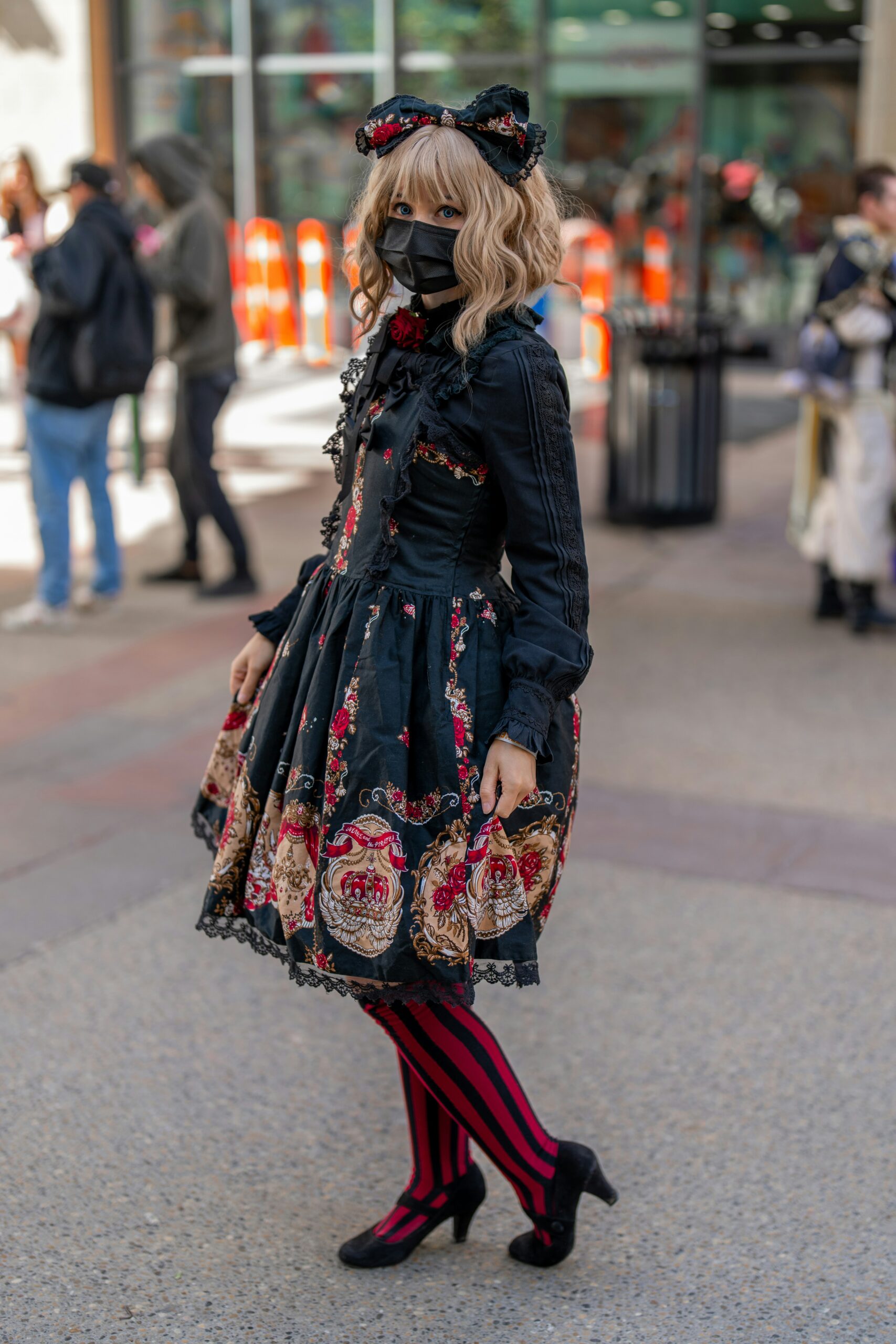In the kaleidoscopic landscape of global fashion, Japan has long stood out for its bold, innovative designs and cultural depth. Among its many contributions, the Lolita fashion movement shines as a beacon of creativity, individuality, and resistance to mainstream fashion norms. Rooted in a blend of historical European clothing with modern Japanese influence, Lolita fashion has evolved into a worldwide phenomenon, captivating hearts with its unique aesthetics and rich subcultural elements. This article delves into the intricacies of Japan’s Lolita fashion movement, exploring its origins, styles, cultural significance, and the challenges it faces in today’s rapidly changing world.
Understanding Japan’s Lolita Fashion Phenomenon
Lolita fashion, characterized by its intricate, doll-like outfits, has become one of Japan’s most iconic fashion subcultures. Originating in the 1980s, it draws inspiration from Victorian and Rococo eras, creating an aesthetic that emphasizes modesty, elegance, and a touch of whimsy. The movement is more than just clothing; it’s a form of self-expression and escapism, allowing individuals to step away from societal pressures and embrace a unique identity. Lolita fashion challenges traditional norms of beauty and fashion, promoting diversity and individual creativity within its community.
The Origins of Lolita Fashion in Japan
The roots of Lolita fashion trace back to the late 1970s and early 1980s, emerging from Japan’s vibrant Harajuku district. It was a response to the rigid societal norms and the pressure to conform, offering an alternative through fashion that celebrated youth, innocence, and femininity. Early adopters were influenced by the Rococo and Victorian-era costumes, Japanese manga, and the burgeoning punk movement, blending these elements into something entirely new. Brands like Pink House, Milk, and Angelic Pretty played pivotal roles in shaping the early Lolita aesthetic, setting the stage for a fashion revolution.
Key Elements of Lolita Fashion Aesthetics
Lolita fashion is distinguished by several key elements: voluminous skirts supported by petticoats, intricate lacework, bows, and a palette that can range from vibrant colors to pastel hues. Each outfit is carefully coordinated with matching accessories, such as headpieces, stockings, and footwear, often adorned with motifs like flowers, animals, or fairy-tale elements. The silhouette is crucial, aiming to create a "cupcake" shape that enhances the youthful, doll-like appearance. Fabric choice and pattern play significant roles, with a preference for high-quality materials and detailed prints.
Decoding the Styles: Gothic, Sweet, and Classic Lolita
Within the Lolita fashion movement, several distinct styles have emerged, each with its own characteristics. Gothic Lolita draws on dark, mysterious elements, utilizing a palette of black and deep purples, lace, and crosses for a more somber look. Sweet Lolita, in contrast, embraces pastel colors, cute motifs like animals and sweets, and lots of bows for a whimsical, fairy-tale vibe. Classic Lolita strikes a balance between these extremes, featuring more subdued colors, floral prints, and a focus on elegance and simplicity reminiscent of European historical clothing.
The Influence of Japanese Pop Culture on Lolita Fashion
Japanese pop culture, particularly manga and anime, has played a significant role in popularizing and influencing Lolita fashion. Characters dressed in Lolita attire often appear in these mediums, introducing the style to a broader audience and inspiring fans to embrace the fashion in real life. Bands and musicians within the visual kei and J-pop scenes have also adopted Lolita aesthetics, further blurring the lines between fashion, music, and art. This synergy has helped Lolita fashion maintain its relevance and appeal, continually evolving with new influences and trends.
Lolita Fashion: Beyond Clothing to a Cultural Statement
Lolita fashion transcends the mere act of dressing; it’s a lifestyle and a form of cultural commentary. For many, it’s an escape from the pressures of conformity, a way to reclaim innocence in a hyper-sexualized world, or a method of crafting personal narratives through fashion. Community events, such as tea parties and meet-ups, foster a sense of belonging and support among Lolitas, further solidifying its status as a subculture. In this way, Lolita fashion becomes a medium for self-expression, challenging societal norms and advocating for a more inclusive understanding of beauty.
Navigating the World of Lolita Brands and Designers
The Lolita fashion industry is supported by a wide array of brands and designers, ranging from well-established names to independent creators. Mainstream brands like Baby, The Stars Shine Bright, and Angelic Pretty are renowned for their high-quality garments and distinctive styles. Meanwhile, indie brands and designers often bring innovative, personalized touches to the scene, catering to the diverse tastes within the Lolita community. Navigating this landscape requires a keen eye for authenticity, as the market also contends with counterfeit products that undermine the craftsmanship and creativity of genuine Lolita fashion.
The Role of Social Media in Spreading Lolita Fashion
Social media platforms have been instrumental in the globalization of Lolita fashion, enabling enthusiasts from all over the world to share their outfits, experiences, and advice. Instagram, YouTube, and TikTok, in particular, have become vibrant spaces for Lolita content, showcasing the diversity and creativity of the community. Through tutorials, vlogs, and online meetups, Lolitas have found new ways to connect, learn, and grow, making the fashion more accessible to newcomers and sustaining its popularity across borders.
Challenges and Controversies Surrounding Lolita Fashion
Despite its beauty and cultural significance, Lolita fashion faces its share of challenges and controversies. Misunderstandings and stereotypes about the style, especially its name’s unintended connotations, can lead to social stigma and misinterpretation. The high cost of garments and the pressure to adhere to specific standards within the community can also be daunting for newcomers. Furthermore, the fashion’s visibility has sometimes attracted unwanted attention or criticism, forcing those in the community to defend their passion and right to self-expression.
The International Spread of Lolita Fashion
From its origins in Japan, Lolita fashion has spread across the globe, with vibrant communities in Europe, the Americas, and beyond. International events, such as conventions and fashion shows, have played a crucial role in this expansion, offering platforms for Lolitas worldwide to connect and showcase their styles. The movement’s adaptability and inclusiveness have helped it resonate with diverse audiences, transcending cultural barriers and fostering a global network of enthusiasts united by their love for Lolita fashion.
Embracing Diversity Within the Lolita Community
As Lolita fashion continues to evolve, there’s been a growing emphasis on inclusivity and diversity within the community. This includes challenging traditional beauty standards, supporting Lolitas of all body types, ethnicities, and backgrounds, and broadening the definition of what Lolita fashion can be. These efforts have not only enriched the community but have also ensured that Lolita fashion remains a vibrant, dynamic force in the world of alternative fashion.
Looking Ahead: The Future of Japan’s Lolita Fashion Movement
The future of Japan’s Lolita fashion movement looks promising, with continued innovation and a growing global community. As it adapts to changing social dynamics and technological advancements, Lolita fashion is likely to remain a significant cultural and fashion phenomenon. The movement’s core values of creativity, individuality, and community will continue to inspire both current enthusiasts and future generations, ensuring that Lolita fashion remains a beloved and enduring expression of style and identity.
Japan’s Lolita fashion movement is a testament to the power of clothing as a form of self-expression and cultural commentary. From its origins in the Harajuku streets to its current status as a global phenomenon, Lolita fashion has transcended its initial niche to become a vibrant, inclusive community. With each ruffle, lace, and bow, Lolitas around the world continue to challenge norms, embrace individuality, and craft a unique identity within the tapestry of global fashion. As the movement marches into the future, its spirit of creativity and defiance remains a beacon for those seeking to express themselves through the art of fashion.

